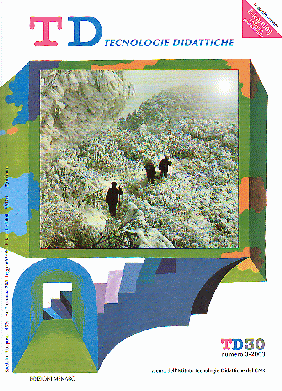E-learning as a complex system
Main Article Content
Abstract
Article Details
Section
Authors who publish with this journal agree to the following terms:
- Authors retain copyright and grant the journal right of first publication with the work simultaneously licensed under a Creative Commons CC BY 4.0 Attribution 4.0 International License.
- Authors are able to enter into separate, additional contractual arrangements for the non-exclusive distribution of the journal's published version of the work (e.g., post it to an institutional repository or publish it in a book), with an acknowledgement of its initial publication in this journal.
- Authors are permitted and encouraged to post their work online (e.g., in institutional repositories or on their website) prior to and during the submission process, as it can lead to productive exchanges, as well as earlier and greater citation of published work (See The Effect of Open Access)
References
Argyris C., Schon D.A. (1995), Organizational Learning: Theory, Method, and Practice, Addison- Wesley Publication Company.
Bush M.D. (2002), Connecting instructional design to international standards for content reusability, Educational Technology, 42, 6, pp. 5-13.
Haughey M., Anderson T. (1998), Networked learning: the pedagogy of the Internet, McGraw-Hill, Toronto.
Kimmerling G. (1993), Gathering best practices, Training and Development, 47, 3, pp. 28-36.
Leh A.S.C. (2001), Computer-mediated communication and social presence in a distance learning environment, International Journal of Educational Telecommunications, 7, 2, pp. 109-128.
Nonaka I., Takeuchi H. (1995), The knowledge-creating company: how Japanese companies create the dynamics of innovation, Oxford University Press, New York.
Rosenberg M.J. (2001), E-learning: strategies for delivering knowledge in the digital age, Mc- Graw-Hill, London.
Senge P. (1990), The fifth discipline: the art and the practice of the learning organization, Doubleday Currency, New York.
Trentin G. (1997), Logical Communication Structures for Network-Based Education and Tele-Teaching, Educational Technology, 37, 4, pp. 19-25.
Trentin G. (1999), Qualità nella formazione a distanza, TD Tecnologie Didattiche, Ed. Menabò, Ortona, n. 16, pp. 10-23.
Trentin G. (2001a), Dalla formazione a distanza all’apprendimento in rete, Franco Angeli, Milano.
Trentin G. (2001b), Designing Online Courses, in Maddux C.D. e La- Mont Johnson D. (eds) The Web in Higher Education: Assessing the Impact and Fulfilling the Potential, The Haworth Press Inc., New York, London, Oxford, pp. 47-66.
Trentin G. (2002), From Distance Education to Virtual Communities of Practice: the Wide Range of Possibilities for Using the Internet in Continuous Education and Training, International Journal on ELearning, 1, 1, pp. 55-66.
Trentin G. (2003), Managing the complexity of e-learning systems, Educational Technology, vol. 43 (printing).
Wenger E. (1998), Communities of practice, Cambridge University Press.

